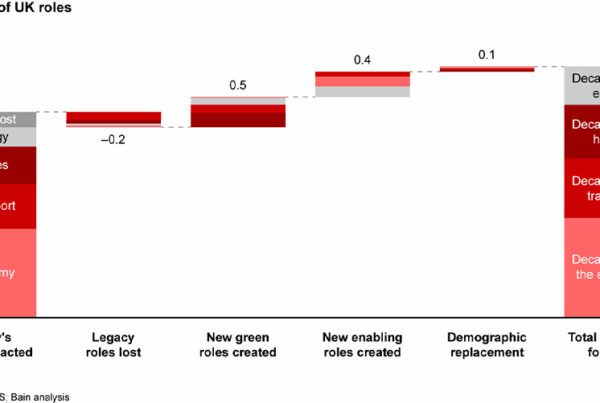A saturated market means consulting and audit firms need to do more than ever to reach new markets with adapted offerings. SAP Global Solution Manager Siegfried Bies, and Hans Kroes, Global Vice President and Industry Lead for SAP’s Professional Services Industry Business Unit, explain how professional services CEOs can expedite the transition to XaaS working.
“As-a-service” offerings, mainstays in the software business, are quickly moving into the realm of services delivered by accounting and financial firms, consultancies, legal practices and others. It’s happening for the simple reason that clients like the idea of paying flat-fee or based on outcomes rather than via the traditional time-and-expense professional-service models.
Professional services firms also stand to gain. Attractive “everything-as-a-service” (XaaS) business models digitize human expertise and thereby decouple revenues from billable hours. Doing so leverages professional service firms’ specialized knowledge into “productized” services that can then be sold as outcome-based, by-subscription, and other extensions of the people-centered services that will continue to underpin these firms’ offerings. Service delivery through combinations of human and technology-embedded expertise also opens the door to new market segments.

As compelling as the advantages of XaaS appear to be, the approach asks some big questions of professional service firms’ CFOs and leadership teams. The big one: How do we ensure that we keep making money? The famous – or infamous – “fish model” is the stuff of CFO nightmares. The “fish” refers to the general impression of a chart showing bulging then receding costs and dipping and then expanding revenues as XaaS business models come to be. Whatever their culinary tastes, CFOs tasked with ensuring steady growth aren’t huge fans these sorts of fish.
New math
Adding to the concern is the fact that, while XaaS may make things easier on clients, professional services firms themselves are on the hook for paying the subject-matter experts and knowledge-encoding software developers – and for leasing or otherwise furnishing the IT and other infrastructure needed to make XaaS happen, among other outlays. That, in turn, introduces new wrinkles in nailing down costs. Assessing and forecasting cost structure, revenues, and profitability become much complex with an XaaS delivery model. In mathematical terms, you’re going from linear to nonlinear models, and that’s the difference between arithmetic and calculus. Fortunately, there are a couple of ways to make the math easier.
First is to know that professional service business are relative latecomers to XaaS, and they’ve generally embarked conservatively. Rather than leaping straight into more complex iterations of XaaS such as risk sharing or outcome-based models, they often start with service automation – that is, offloading to digital solutions the more straightforward, repeatable aspects of service delivery. With increasing familiarity and comfort with the new approach, they then experiment with more ambitious versions of XaaS.
Second is to recognize that positioning yourself for success with XaaS demands greater visibility into your operations than is often the case with straightforward time-and-expense models. Think of XaaS as a way to repackage old and new elements of service delivery in countless new ways for a diverse clientele. Conceptually, this is to deconstruct your resources to the product/service level, reassemble them to a given client’s tastes, tally up your costs, estimate revenues, and take it to market. During the service delivery process itself, you must be able to compare actuals with the estimates, understand what worked and what didn’t for the client, and adjust accordingly both in terms of what you’re delivering and how you’re pricing it.
Real-time visibility into operations becomes more important with XaaS because you don’t want to wait until the end of an engagement to figure out it’s losing money. To roll out XaaS is to experiment and take risks, and you can mitigate those risks if you have the insights needed to course-correct (and also the contractual flexibility to do so).
Balance the portfolio
Given the “fishy” nature of the XaaS transition, CFOs and the leadership of professional service organizations must have insights into not only the depth, but also the breadth of your organization’s pool of XaaS and traditional offerings. Is there cash-cow time-and-expense engagement that you can lean on to counterbalance the uncertainty of a proposed shared-risk or outcome-based XaaS offering that may or may not hit your sales organization’s optimistic projections? Are there geographies, based on culture or client mix, that lend themselves to experimenting with XaaS? (For example, clients in the United States tend to be more risk tolerant than, say, those in the authors’ native Germany and the Netherlands.)
XaaS places new demands on finance teams and the systems that support them. It’s happening at different paces in different places, and there’s variability in adoption across the professional services spectrum (those with a heavier IT bent and with more standardized offerings, in particular accounting firms, tend to be at the vanguard). What’s clear is that XaaS’s appeal to clients, its potential upside for professional services firms, and the emergence of cloud-based systems capable of providing a basis for confidently managing as-a-service models are fueling XaaS’s rise in professional services, and it’s a wave worth catching.
SAP is a multinational software company. It develops enterprise software to manage business operations and customer relations. The company is the world’s largest enterprise resource planning software vendor.




